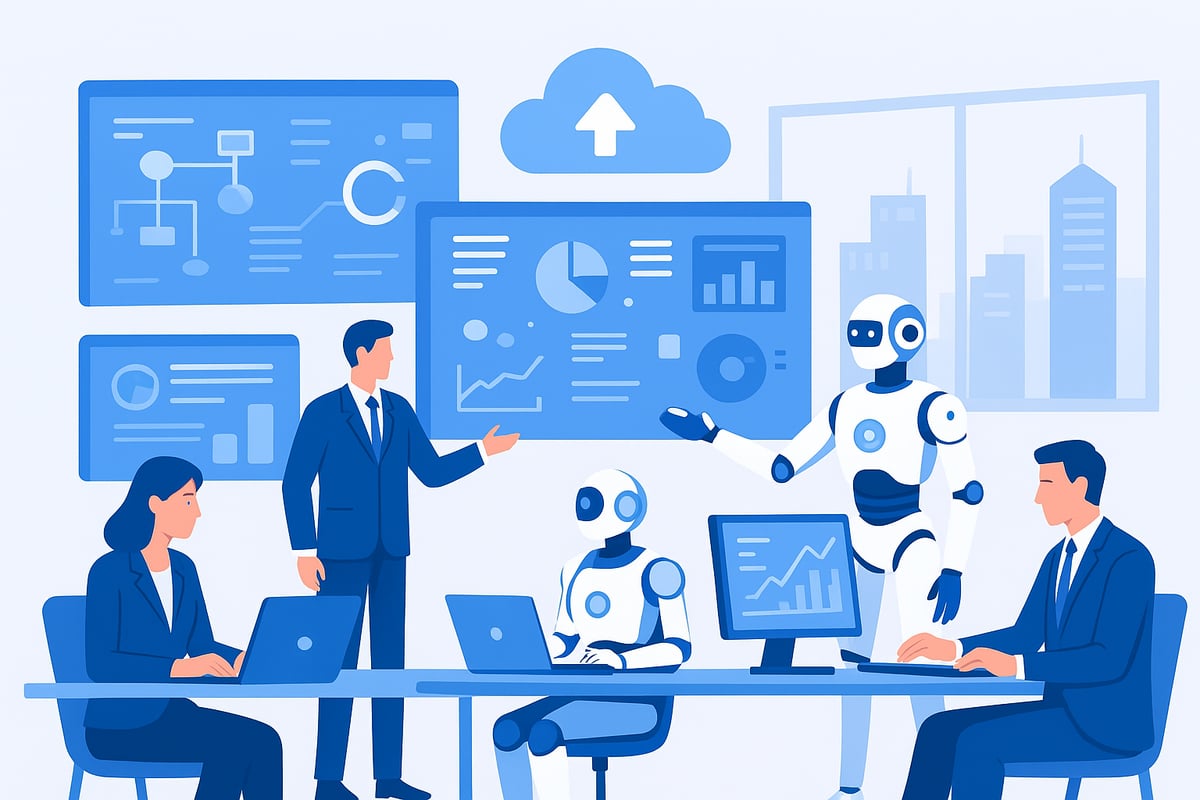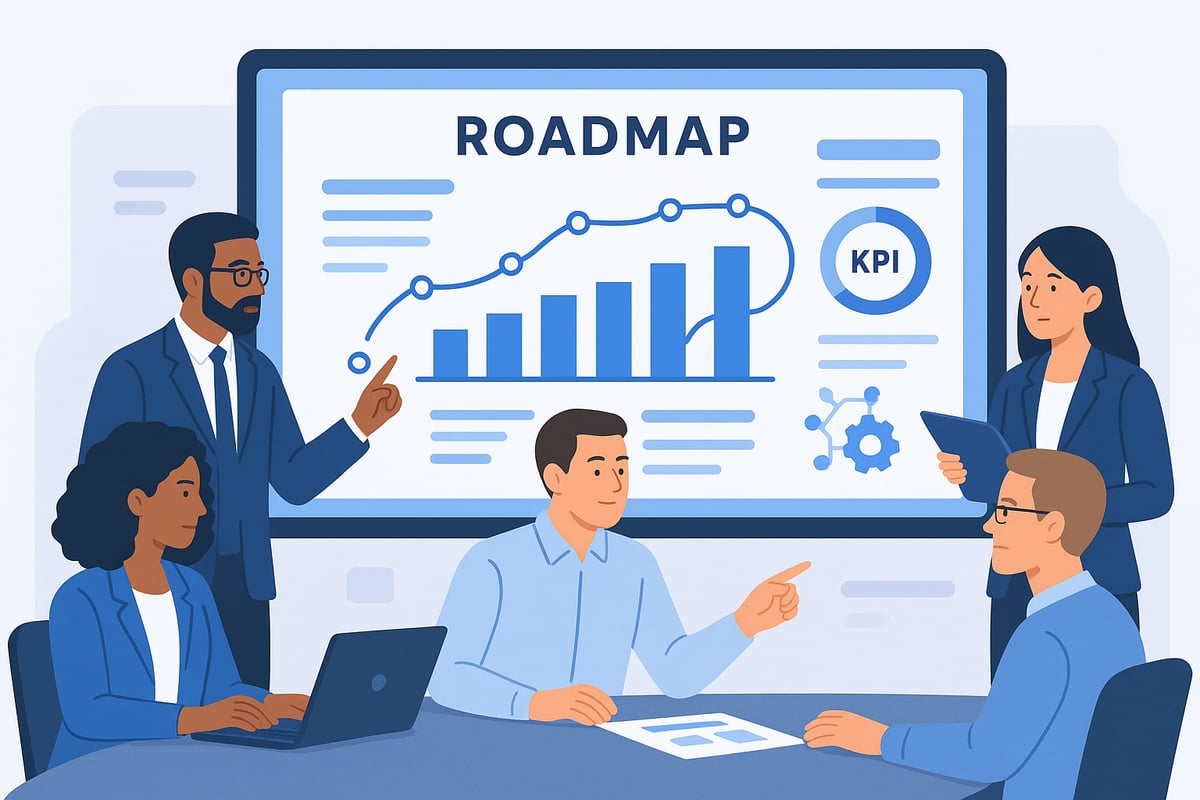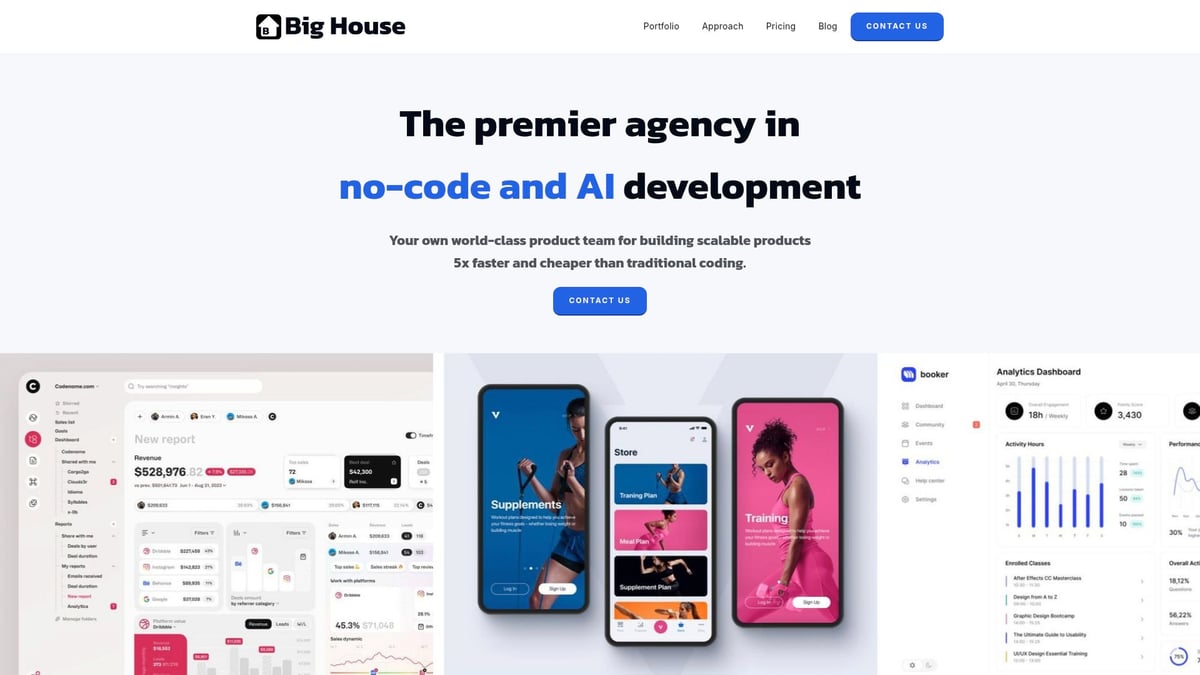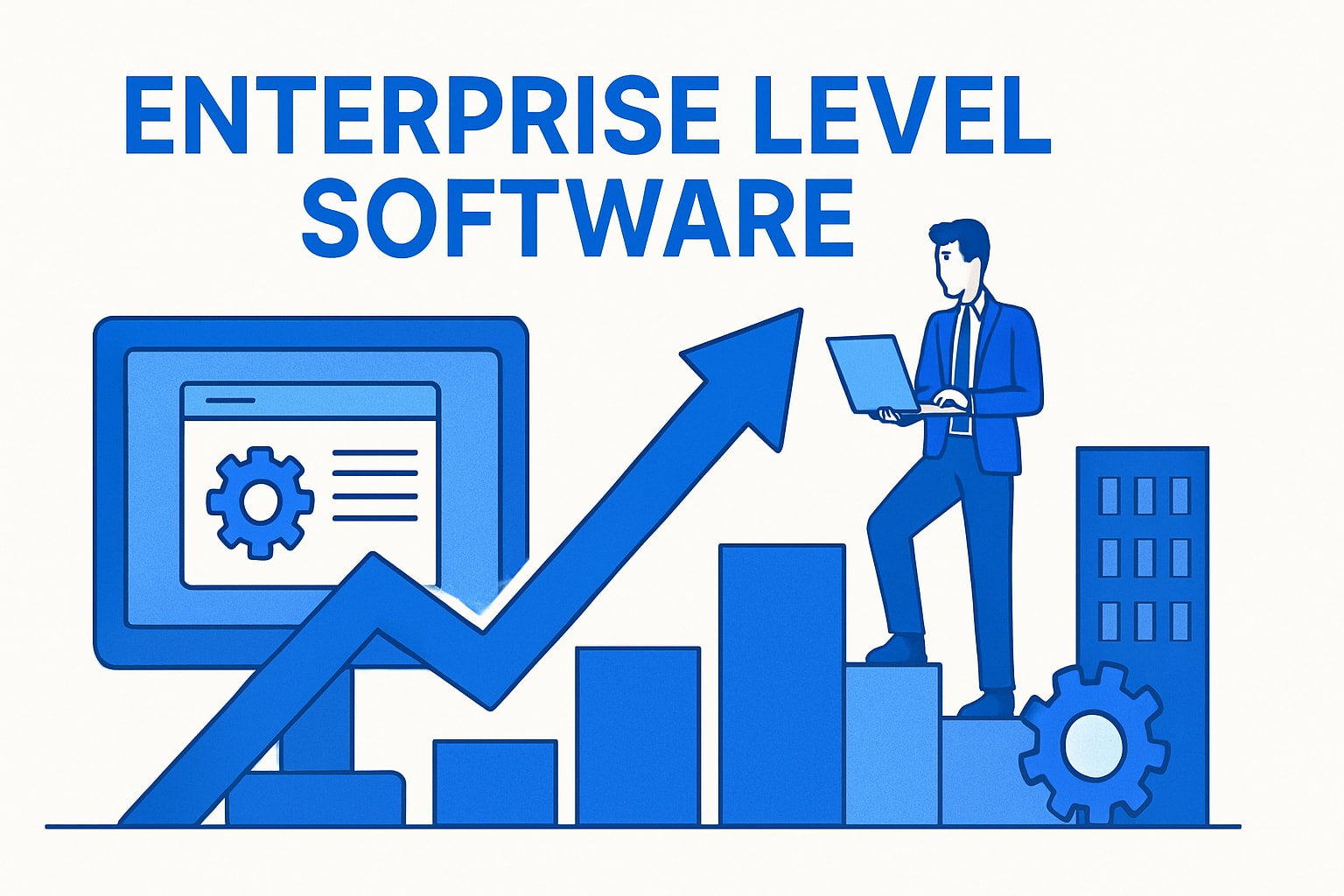As 2025 draws near, organizations are facing a software landscape that is evolving at breakneck speed. Agility, scalability, and innovation are no longer luxuries—they are now critical for staying competitive.
Choosing the right enterprise level software is more important than ever. The right decisions can unlock new efficiencies, fuel growth, and help you navigate complex digital challenges.
This guide is your roadmap to success. Discover the latest trends, must-have features, evaluation methods, and integration strategies that will keep your business ahead in 2025. Ready to take action? Let’s explore how to future-proof your organization with the best enterprise level software solutions.
The Evolving Landscape of Enterprise Software in 2025
As we move toward 2025, the world of enterprise level software is transforming at an unprecedented pace. Organizations must adapt to new trends, tackle emerging challenges, and seek out solutions that are both innovative and resilient. Let's break down what’s shaping this dynamic environment and how your enterprise can stay ahead.

Key Trends Shaping Enterprise Software
The landscape of enterprise level software is defined by several powerful trends. Artificial intelligence and automation are now embedded in business applications, driving efficiency and smarter decision-making. Cloud-native architectures have become the standard for new deployments, offering flexibility and scalability.
Security and compliance are top priorities as threats evolve. Low-code and no-code platforms are democratizing software creation, enabling business users to build solutions rapidly. Data-driven decision-making is a must, with organizations relying on real-time insights. Remote and hybrid work tools continue to expand, supporting distributed teams. According to Gartner, by 2025, 70% of new enterprise applications will use low-code or no-code platforms. For a deeper dive into these trends, check out Enterprise Software Trends 2025.
Challenges Facing Enterprises
Despite these advances, enterprises face significant hurdles. Integrating new enterprise level software with legacy systems can be complex and time-consuming. Software sprawl is a growing issue, as organizations juggle multiple platforms and risk vendor lock-in.
Balancing the push for innovation with strict regulatory requirements adds another layer of complexity. Scalability remains a concern, especially for organizations operating globally. Finally, there is a persistent skills gap, particularly in emerging technologies like AI and automation, which can slow adoption and ROI.
Future-Ready Software Characteristics
Future-ready enterprise level software shares several key traits. Modular, API-first design ensures seamless integration with both legacy and modern systems. Scalability is built in, allowing organizations to handle fluctuating workloads with ease.
Strong security frameworks, including zero trust models and data encryption, protect sensitive information. Real-time analytics and reporting capabilities empower leaders to make informed decisions fast. Personalization and automation features enable tailored user experiences and streamlined operations.
Market Data and Competitive Insights
Spending on enterprise level software is soaring. IDC projects global enterprise software investment will hit $900 billion by 2025. The finance, healthcare, and manufacturing sectors are leading the charge, recognizing software’s role in driving transformation.
Competitors are prioritizing customer-centric design and flexible deployment models to stay relevant. They are also investing in talent and technology to maintain a competitive edge. Success in this market demands continuous innovation and a clear focus on user needs.
Case Study Example
Consider a Fortune 500 company that implemented AI-driven enterprise level software for their ERP system. By leveraging advanced analytics and automation, the company reduced operational costs by 20%.
This transformation allowed them to reallocate resources toward growth initiatives and increase overall efficiency. The case highlights how strategic adoption of future-ready software can deliver measurable business outcomes. It also underscores the importance of aligning technology investments with long-term organizational goals.
Strategic Planning for Enterprise Software Success
Strategic planning is the backbone of any successful enterprise level software initiative. With 2025 on the horizon, organizations must ensure their software investments align tightly with long-term goals and market shifts. Every phase, from evaluation to rollout, demands a clear roadmap and cross-functional collaboration.

Aligning Software Strategy with Business Goals
To make the most of enterprise level software, organizations must first define clear business objectives and KPIs. Pinpoint what success looks like, such as boosting customer retention or streamlining operations. Next, map software capabilities directly to these goals.
Stakeholder engagement is essential, bringing together executives, department leads, and end-users to ensure all perspectives are considered. For example, aligning a CRM upgrade to customer retention targets can drive measurable value.
Partnering with an Enterprise Software Development Company can help organizations identify software solutions that fit both current and future needs, ensuring the technology roadmap supports business strategy.
Evaluating Build vs. Buy vs. No-Code/Low-Code
Choosing between custom-built solutions, off-the-shelf software, or no-code/low-code platforms is a pivotal decision in enterprise level software planning.
| Option | Pros | Cons |
|---|---|---|
| Build | Customization, control | Higher cost, longer timeline |
| Buy | Speed, vendor support | Less flexibility, potential vendor lock-in |
| No-Code/Low-Code | Rapid deployment, empowers business users | Limited customization, platform risk |
No-code/low-code options bridge the gap, enabling faster time-to-market with fewer resources. Many enterprises report a 70% reduction in deployment time using these platforms.
The Role of Cross-Functional Teams
Enterprise level software projects thrive when IT and business teams collaborate closely. Cross-functional teams foster shared ownership and ensure requirements are captured from every angle.
Agile methodologies, such as Scrum, support iterative development and continuous feedback. Change management is equally important—appoint champions within departments to drive adoption and communicate benefits.
This collaborative approach reduces resistance and accelerates value realization, making enterprise level software more effective across the organization.
Budgeting and ROI Analysis
A robust financial strategy is critical for enterprise level software success. Start with a total cost of ownership (TCO) calculation, covering licensing, infrastructure, training, and ongoing support.
Use these key ROI metrics to evaluate options:
- Projected payback period
- Expected efficiency gains
- Budget allocation for upgrades and scaling
Regularly review these figures to ensure software investments stay aligned with business priorities and deliver sustained value.
Risk Management and Compliance
Security and compliance risks are top of mind with any enterprise level software deployment. Identify potential vulnerabilities early, including data privacy regulations like GDPR and CCPA.
Develop comprehensive strategies for:
- Role-based access controls
- Encryption and audit logging
- Business continuity planning
Proactive risk management protects the organization and supports regulatory compliance, reducing costly disruptions.
Example Roadmap for 2025
A step-by-step roadmap streamlines enterprise level software implementation:
- Needs assessment: Gather requirements and prioritize features.
- Vendor selection: Evaluate options, negotiate contracts.
- Pilot testing: Run small-scale trials, collect feedback.
- Customization and integration: Tailor solutions, ensure smooth data flows.
- Training and change management: Enable users, drive adoption.
- Rollout and optimization: Deploy in phases, monitor and refine.
This structured approach positions enterprises for software success in 2025 and beyond.
Critical Features and Capabilities for 2025 Enterprise Software
Selecting the right enterprise level software in 2025 means knowing exactly which features will drive your organization forward. As digital transformation accelerates, companies must prioritize adaptability, security, and intelligence in every software investment.

Core Functional Requirements
Every enterprise level software must support scalability, seamless integration, and robust user management. Organizations now operate globally, so platforms need to handle thousands of users, multiple regions, and diverse business processes.
Here is a quick comparison of critical requirements:
| Requirement | Importance in 2025 | Example Use Case |
|---|---|---|
| Scalability | High | Expanding to new markets |
| Multi-tenancy | Essential | Serving multiple brands |
| Integration | Crucial | ERP, CRM connections |
| Mobile Access | Must-have | Remote workforce |
With these features, enterprise level software empowers teams to adapt quickly and maintain operational excellence.
Security and Compliance Essentials
Security is non-negotiable for any enterprise level software. Companies must adopt role-based access control, end-to-end encryption, and audit trails to protect sensitive data.
- Role-based access ensures only authorized personnel can access critical information.
- Encryption keeps data secure during transfer and storage.
- Automated compliance reporting helps organizations meet regulatory standards effortlessly.
Maintaining compliance with frameworks like GDPR and CCPA is now a core expectation. Enterprise level software should provide real-time monitoring and alerting to identify risks before they escalate.
AI, Automation, and Analytics
AI and automation are transforming enterprise level software, making operations smarter and more efficient. Embedded AI now powers predictive analytics, helping leaders make proactive decisions.
Automation reduces repetitive manual work, freeing staff for higher-value tasks. Real-time dashboards and analytics provide instant visibility into business performance.
For example, AI-driven support modules can cut ticket resolution time by half, improving customer satisfaction and productivity. In 2025, organizations expect enterprise level software to deliver these intelligent capabilities out of the box.
User Experience and Accessibility
User experience is at the heart of successful enterprise level software. An intuitive interface, guided onboarding, and customizable dashboards make adoption smoother for everyone.
Accessibility is equally important. Solutions should follow WCAG guidelines to support users with disabilities. Features like keyboard navigation, screen reader compatibility, and clear visual cues open the door for all team members.
With enterprise level software, guided user flows and tailored experiences boost onboarding and keep engagement high from day one.
Integration and API Ecosystem
Modern enterprise level software must offer open APIs and a thriving ecosystem for third-party integrations. This flexibility allows organizations to connect HR, payroll, benefits, and other business-critical platforms.
A robust API strategy ensures data flows seamlessly between systems, reducing silos and manual work. To learn more about best practices for building and maintaining enterprise-grade applications, explore Enterprise App Development Services.
With an active marketplace for plugins and connectors, enterprise level software adapts as your business evolves, supporting innovation at every stage.
Flexibility and Customization
Flexibility is the secret sauce that makes enterprise level software future-proof. Modular architectures let companies add or remove features as needed, while no-code and low-code customization options empower business users to tailor solutions without waiting for IT.
Multi-language and localization support ensure the software fits diverse teams and markets. By prioritizing customization, enterprise level software can quickly respond to shifting business needs, regulations, and customer expectations.
Implementation Best Practices: A Step-by-Step Guide
Implementing enterprise level software is a journey with clear milestones. Following a structured approach ensures success, mitigates risks, and maximizes the value of your investment. Let’s break down the process into six essential steps that every organization should follow for a smooth rollout.
Step 1: Comprehensive Needs Assessment
Start by gathering input from all key stakeholders. This step is critical to ensure your enterprise level software will truly address business requirements. Engage departments across the organization to capture diverse needs.
Prioritize features into must-have and nice-to-have categories. Document existing workflows and pain points. A thorough needs assessment sets the foundation for selecting the right solution and prevents costly misalignment later. By aligning your software vision early, you boost buy-in and minimize resistance.
Step 2: Vendor Evaluation and Selection
Once you know what your enterprise level software must accomplish, it’s time to evaluate vendors. Create a detailed RFP outlining your requirements and expectations. Assess each vendor’s track record, support capabilities, and alignment with your industry needs.
Compare pricing models, contract flexibility, and long-term support options. Shortlist solutions that fit both your technical and business goals. Taking a methodical approach reduces the risk of vendor lock-in and ensures a partnership that can evolve with your enterprise.
Step 3: Proof of Concept and Pilot Testing
Before committing to a full rollout, run a pilot project. Select a representative user group to test the enterprise level software in real-world scenarios. Capture feedback on usability, performance, and integration challenges.
Use this phase to identify gaps and validate whether the solution meets your needs. Adjust configurations or workflows as needed. A successful pilot builds confidence among stakeholders and uncovers potential issues early, saving time and resources.
Step 4: Customization and Integration
With feedback in hand, tailor the enterprise level software to fit your organization. Configure features, permissions, and workflows to match your business processes. Integration with legacy systems and cloud platforms is often necessary for seamless data flow.
Data migration and synchronization require careful planning. Consider leveraging no-code solutions to speed up customization and empower non-technical teams, as highlighted in How No-Code Is Empowering Non-Technical Teams to Innovate in Large Enterprises. This approach can accelerate deployment and reduce IT bottlenecks.
Step 5: Training and Change Management
A successful enterprise level software launch goes beyond technology. Invest in comprehensive training programs for all user groups. Identify champions and super-users who can support their peers and drive adoption.
Communicate the benefits of the new system clearly. Address concerns and provide ongoing support to minimize resistance. Change management is an ongoing process, so keep feedback channels open and celebrate quick wins to maintain momentum.
Step 6: Full-Scale Deployment and Support
Plan your rollout strategy—phased or organization-wide—based on complexity and risk tolerance. Monitor user adoption closely, resolve issues promptly, and provide robust support channels.
Establish clear protocols for maintenance, updates, and troubleshooting. Continuous improvement ensures your enterprise level software adapts to changing needs and delivers long-term value. A strong support structure keeps your systems running smoothly and your teams productive.
Future-Proofing Your Enterprise Software Investments
Staying ahead in the digital race means making smart, future-ready choices for your enterprise level software. As technology moves faster every year, organizations must build resilience and flexibility into every software investment.
Embracing Modular and API-Driven Architectures
Modern enterprise level software thrives on modular design and an API-first approach. By breaking systems into interchangeable modules, your business can quickly swap or upgrade features without disrupting operations.
This flexibility is essential for scaling as needs change. For example, if your company wants to integrate a new payment provider, a modular architecture allows you to do so with minimal downtime.
Key benefits include:
- Easier integration with third-party tools
- Faster response to market shifts
- Reduced technical debt over time
With an API-driven foundation, enterprise level software stays adaptable and ready for tomorrow’s demands.
Leveraging AI and No-Code Platforms
The next wave of enterprise level software is powered by AI and democratized by no-code development. AI enhances automation, analytics, and personalization, while no-code tools let business users build solutions without heavy coding.
This combination enables rapid innovation, reduces bottlenecks, and empowers teams across departments. For a deeper dive on these approaches, see Low-Code vs No-Code: Key Differences in 2025.
Together, AI and no-code platforms help organizations adapt quickly—whether automating workflows or launching new products—keeping their enterprise level software both competitive and future-proof.
Continuous Improvement and Feedback Loops
Adopting a mindset of continuous improvement is vital for maximizing the value of enterprise level software. Regularly gather feedback from real users, conduct agile retrospectives, and use analytics to guide future enhancements.
Simple steps to foster improvement:
- Schedule monthly feedback sessions
- Track user adoption metrics
- Prioritize updates based on real-world needs
This ongoing loop ensures your enterprise level software continues to evolve in line with business objectives and changing market conditions.
Monitoring Technology Trends and Vendor Roadmaps
Staying informed about technology trends is crucial for future-proofing enterprise level software. Keep an eye on advancements in AI, cybersecurity, and cloud platforms. Evaluate vendor roadmaps to ensure ongoing support and innovation.
| Trend | Impact on Software |
|---|---|
| AI & Automation | Smarter, predictive apps |
| Cloud-Native | Greater scalability |
| Cybersecurity | Enhanced data protection |
Consulting resources like the Enterprise Software Market Forecast can guide your long-term planning and investment decisions.
Building an Agile and Adaptable IT Culture
The most resilient organizations pair modern enterprise level software with an agile IT culture. Encourage experimentation, upskill your teams, and create an environment where learning is continuous.
Tips to foster adaptability:
- Invest in regular training sessions
- Celebrate successful experiments
- Encourage cross-functional collaboration
When your people and your enterprise level software can evolve together, your business stands ready for whatever the future brings.
Integration Spotlight: The Rise of No-Code and AI in Enterprise Software
The rise of no-code and AI is reshaping how organizations approach enterprise level software. These technologies offer new ways to innovate, reduce time to market, and empower teams of all technical backgrounds. In this spotlight, we explore how no-code and AI are unlocking agility, efficiency, and future-readiness for enterprises.
No-Code Platforms Transforming Enterprise Development
No-code platforms are changing the game for enterprise level software development. With intuitive drag-and-drop interfaces, teams can quickly create applications without deep coding expertise. This streamlined approach helps organizations accelerate prototyping, respond to market changes, and launch products up to five times faster.
Key benefits include:
- Reduced reliance on scarce developer talent
- Faster iteration and deployment cycles
- Lower development costs
Many enterprises are leveraging no-code to empower business users, foster innovation, and ensure that technology keeps pace with business demands. As a result, enterprise level software projects that once took months can now be completed in weeks, allowing companies to stay competitive in a fast-moving digital landscape.
AI-Driven Automation for Business Efficiency
AI is rapidly becoming a core capability within enterprise level software, enabling organizations to automate repetitive tasks and unlock real-time insights. By integrating AI-powered tools, businesses can streamline operations and reduce manual errors.
For example, robotic process automation (RPA) can handle tasks like invoice processing, while AI-driven analytics deliver actionable insights for smarter decisions. Automated invoice processing alone has reduced errors by 80 percent for some enterprises. According to AI and Machine Learning Integration, embedding AI in enterprise level software improves efficiency and enables predictive analytics for better planning.
This shift allows employees to focus on higher-value work, while AI handles the repetitive and data-intensive processes that can slow down business growth.
Overcoming Common Barriers to Adoption
Adopting no-code and AI in enterprise level software is not without challenges. Security and compliance concerns are top priorities, especially when sensitive data is involved. Organizations must ensure that no-code platforms offer robust security features, such as role-based access controls and end-to-end encryption.
Another key barrier is change management. Non-technical users may require additional training and support to fully leverage these tools. Successful adoption often involves:
- Comprehensive user training programs
- Clear communication of benefits
- Ongoing technical support
By proactively addressing these barriers, enterprises can maximize the value of their enterprise level software investments and drive widespread adoption across teams.
Selecting the Right No-Code/AI Solution for Your Enterprise
Choosing the best no-code or AI solution for enterprise level software requires a strategic approach. Decision-makers should evaluate platforms based on several criteria:
- Scalability to support future growth
- Integration capabilities with existing systems
- Vendor support and community resources
- Transparent pricing models
A strong platform ecosystem, including third-party app marketplaces and developer communities, also enhances long-term value. Enterprises that prioritize these factors are better positioned to select solutions that align with their operational needs and digital transformation goals, ensuring their enterprise level software remains adaptable.
Big House Technologies: No-Code & AI Solutions for Enterprises
Big House Technologies is a leader in delivering enterprise level software solutions powered by no-code and AI. Their team specializes in platforms like Bubble and Lovable, offering end-to-end services from scoping to quality assurance.

Clients benefit from:
- Rapid project delivery, up to five times faster than traditional development
- Scalable and secure architectures
- Cost-efficient engagement models tailored to enterprise budgets
Testimonials highlight significant cost savings, reduced development time, and transformative business outcomes. By partnering with Big House Technologies, organizations gain a trusted ally in their journey to modernize enterprise level software and achieve digital transformation.
Future Outlook for No-Code and AI in Enterprises
The future of enterprise level software is deeply intertwined with no-code and AI. Gartner predicts that by 2025, 70 percent of new enterprise applications will be built using no-code platforms. AI adoption is expected to drive $4 trillion in business value by 2025, according to McKinsey.
Enterprises leveraging these technologies will outpace competitors, adapt swiftly to market changes, and deliver innovative solutions at scale. For more on how AI is shaping SaaS and enterprise applications, see AI's Role in SaaS. The organizations that prioritize agility and continuous learning will lead the next era of enterprise level software innovation.
As you look toward 2025 and start mapping out your enterprise software strategy, it’s clear that having the right tools and team in place will make all the difference. Whether you’re working to integrate AI, exploring no code solutions, or simply trying to keep pace with rapid change, getting expert guidance can help you avoid costly missteps and move faster. If you’re ready to talk through your vision or want a second opinion on your approach, why not connect with someone who gets it We’re here to help—just Talk to a Product Strategist and take the next step toward your software success.




About Big House
Big House is committed to 1) developing robust internal tools for enterprises, and 2) crafting minimum viable products (MVPs) that help startups and entrepreneurs bring their visions to life.
If you'd like to explore how we can build technology for you, get in touch. We'd be excited to discuss what you have in mind.
Other Articles
Unlock 2025 success with expert software platform development strategies. Discover trends, step-by-step processes, and tools to build scalable, future-ready platforms.
Discover the best artificial intelligence app picks for 2025 Explore top AI apps transforming productivity creativity and business with key features and expert tips
Discover how no code platforms are revolutionizing innovation in 2025. Learn key features, use cases, and strategies to unlock rapid digital transformation.

